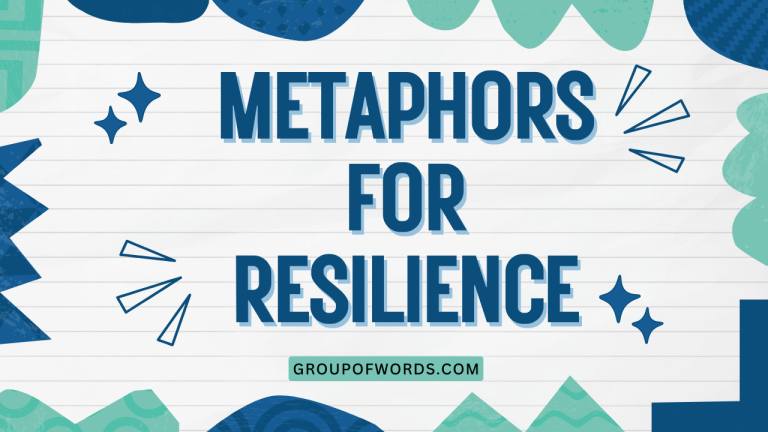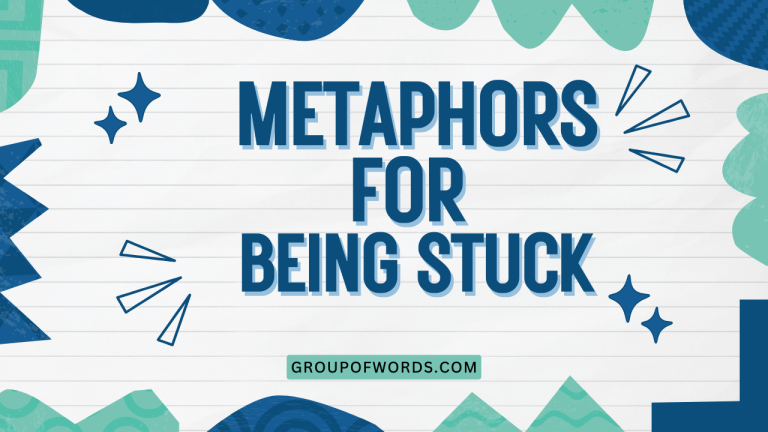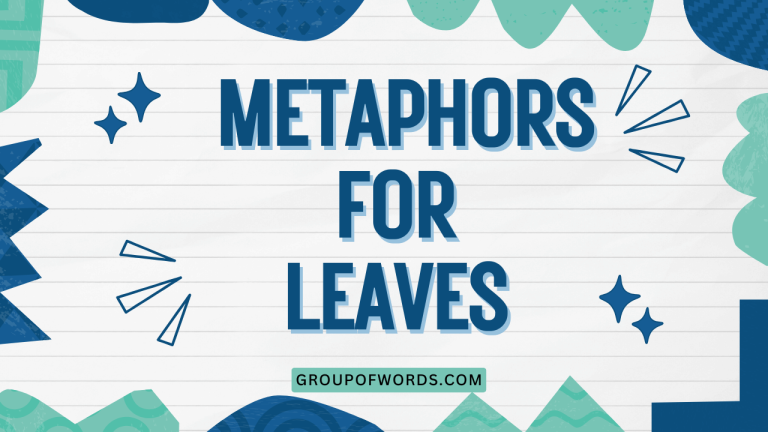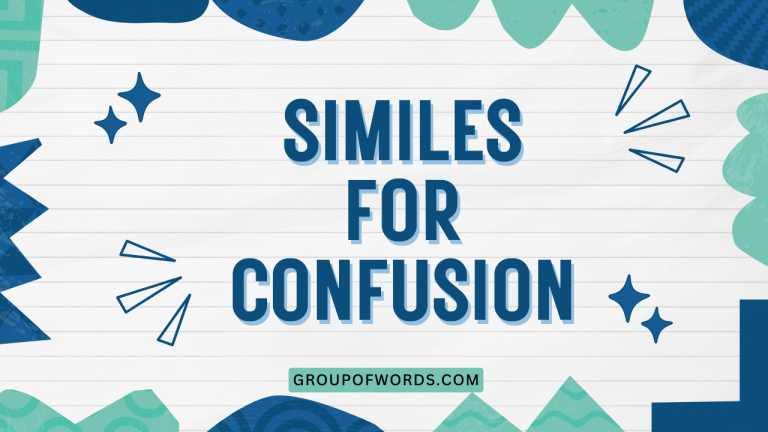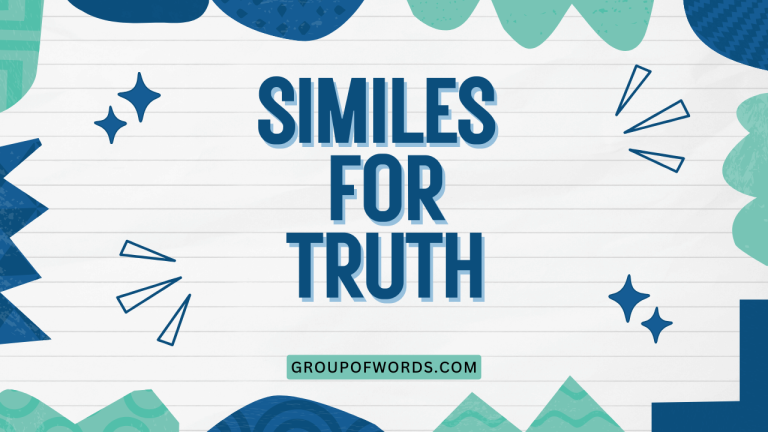Similes for Hard Work: A Comprehensive Guide
Understanding and using similes effectively can significantly enhance your writing and speaking skills. Similes, a type of figurative language, allow you to draw comparisons between two unlike things, making your language more vivid and engaging.
This article focuses specifically on similes used to describe hard work, providing a detailed exploration of their structure, usage, and impact. Whether you’re a student, writer, or simply someone looking to improve your communication, this guide will equip you with the knowledge and tools to master similes related to diligence and effort.
By the end of this article, you will be able to identify, interpret, and create compelling similes that effectively convey the concept of hard work. We’ll cover various categories of similes, provide numerous examples, and offer practice exercises to solidify your understanding.
So, let’s dive in and explore the power of similes in describing the dedication and perseverance associated with hard work.
Table of Contents
- Introduction
- Definition of Similes for Hard Work
- Structural Breakdown of Similes
- Types of Similes Describing Hard Work
- Examples of Similes for Hard Work
- Usage Rules for Similes
- Common Mistakes When Using Similes
- Practice Exercises
- Advanced Topics: Nuances and Subtleties
- Frequently Asked Questions
- Conclusion
Definition of Similes for Hard Work
A simile is a figure of speech that compares two unlike things using the words “like” or “as.” In the context of hard work, a simile draws a parallel between the effort, dedication, or intensity of someone’s work and something else that embodies those qualities. These similes serve to emphasize the level of commitment and energy expended in a particular task or endeavor.
Similes are essential tools for writers and speakers because they add color, depth, and impact to their language. By using similes effectively, you can paint a vivid picture of the hard work being described, making it more relatable and memorable for your audience.
The key to a good simile is finding a comparison that is both unexpected and insightful, revealing a hidden similarity between the work and the object or concept it’s being compared to.
Consider the simile “He worked like a dog.” This simple phrase immediately conveys the idea that the person worked tirelessly and with great effort, drawing on the common perception of dogs as loyal and hardworking animals. The power of the simile lies in its ability to evoke this image in the reader’s mind, creating a stronger impression than merely stating “He worked very hard.”
Structural Breakdown of Similes
The basic structure of a simile consists of three main components:
- The Subject: This is the person, object, or concept being described. In our case, it’s the individual or their work ethic.
- The Linking Word: This is either “like” or “as,” which connects the subject to the thing it’s being compared to.
- The Object of Comparison: This is the thing that the subject is being compared to, chosen for its shared quality with the subject.
Let’s break down the simile “She worked like a machine” using this structure:
- Subject: She (the person working)
- Linking Word: like
- Object of Comparison: a machine (known for its relentless and efficient operation)
Another example is: “He was as persistent as a dripping faucet.”
- Subject: He (the person working)
- Linking Word: as
- Object of Comparison: a dripping faucet (known for its relentless and unstoppable dripping)
Understanding this structure allows you to deconstruct existing similes and create your own. By identifying the quality you want to emphasize (e.g., tireless effort, unwavering focus), you can select an object of comparison that embodies that quality and connect it to your subject using “like” or “as.” The effectiveness of the simile depends on the aptness of the comparison and its ability to resonate with the audience.
Types of Similes Describing Hard Work
Similes for hard work can be categorized based on the specific aspect of work they emphasize. Here are some common categories:
Physical Exertion
These similes focus on the physical effort and stamina required for hard work. They often involve comparisons to animals known for their strength and endurance, or to objects that represent physical labor.
Mental Effort
These similes highlight the cognitive demands of hard work, such as concentration, problem-solving, and critical thinking. They may compare the mental effort to complex processes or challenging intellectual tasks.
Persistence and Determination
These similes emphasize the unwavering commitment and resilience required to overcome obstacles and achieve goals. They often involve comparisons to things that are known for their stubbornness or ability to withstand pressure.
Dedication and Commitment
These similes illustrate the level of commitment and devotion to a task or goal. They might compare the dedication to something that is highly valued or cherished.
Examples of Similes for Hard Work
This section provides a comprehensive list of similes categorized by the type of hard work they describe. Each category includes a variety of examples to illustrate the diverse ways in which similes can be used.
Physical Exertion Examples
The following table provides examples of similes that describe physical exertion. These similes often use animals or machines known for their strength and tireless nature.
| Simile | Explanation |
|---|---|
| He worked like a horse. | Implies tireless and strenuous physical labor, similar to a horse pulling a heavy load. |
| She toiled like a beaver. | Suggests diligent and persistent work, like a beaver building a dam. |
| He sweated like a pig. | Emphasizes the intense physical effort that resulted in profuse sweating. |
| She strained like an ox. | Highlights the great physical force exerted during the work. |
| He dug like a badger. | Implies persistent and determined digging, similar to a badger creating a burrow. |
| She carried the load like a pack mule. | Suggests bearing a heavy burden with unwavering effort. |
| He hammered like a machine. | Emphasizes the relentless and consistent hammering action. |
| She lifted like a crane. | Highlights the ability to lift heavy objects, similar to a crane. |
| He pushed like a bulldozer. | Implies forcefully moving obstacles, similar to a bulldozer clearing a path. |
| She pulled like a tractor. | Suggests persistent and powerful pulling, like a tractor towing a heavy load. |
| He chopped wood like a lumberjack. | Emphasizes the skill and strength in chopping wood, similar to a professional lumberjack. |
| She cleaned like a whirlwind. | Suggests rapid and thorough cleaning, like a whirlwind sweeping through a room. |
| He built like an ant building a colony. | Implies tireless and collaborative construction, similar to ants building their colony. |
| She climbed like a mountain goat. | Highlights agility and ease in climbing steep terrain, similar to a mountain goat. |
| He ran like a cheetah chasing its prey. | Emphasizes speed and determination in running, like a cheetah hunting. |
| She worked the field like generations before her. | Implies a deep connection to tradition and a strong work ethic passed down through time. |
| He tilled the soil like his life depended on it. | Suggests intense dedication and the vital importance of the work being done. |
| She harvested the crops like her family’s survival was at stake. | Highlights the critical nature of the work and the responsibility felt towards her family. |
| He hauled the stones like a medieval serf. | Implies back-breaking labor and a sense of obligation to complete the task. |
| She scrubbed the floors like her reputation was on the line. | Emphasizes the thoroughness and dedication to even the most mundane tasks. |
| He dug the trench like he was searching for gold. | Suggests unwavering focus and a belief that a great reward awaits. |
| She lifted the bales of hay like they were feathers. | Highlights her surprising strength and ease in performing a difficult task. |
| He hauled the water like an ancient water carrier. | Implies a connection to a long history of hard work and resilience. |
| She mended the nets like her livelihood depended on it. | Emphasizes the importance of the work and the dedication to maintaining her source of income. |
These similes effectively convey the intensity and physical demands of various types of labor, making the descriptions more vivid and relatable.
Mental Effort Examples
This table provides examples of similes that describe mental effort. These similes often compare the mental process to complex machinery or challenging intellectual pursuits.
| Simile | Explanation |
|---|---|
| He thought like a computer processing data. | Implies rapid and efficient processing of information. |
| She calculated like a human calculator. | Suggests exceptional mathematical ability and precision. |
| He analyzed the situation like a detective solving a case. | Emphasizes thorough investigation and logical reasoning. |
| She strategized like a chess grandmaster. | Highlights the ability to plan ahead and anticipate future moves. |
| He concentrated like a laser beam focused on a target. | Implies intense focus and unwavering attention. |
| She brainstormed like a waterfall of ideas. | Suggests a rapid and continuous flow of creative ideas. |
| He learned like a sponge absorbing water. | Emphasizes the ability to quickly and thoroughly acquire new knowledge. |
| She remembered like an elephant never forgetting. | Highlights exceptional memory and recall ability. |
| He questioned like a curious child seeking answers. | Implies a persistent and inquisitive approach to learning. |
| She debated like a seasoned lawyer arguing a case. | Suggests skillful and persuasive argumentation. |
| He wrote like a scribe illuminated manuscripts. | Emphasizes precision and dedication in writing. |
| She edited like a surgeon performing surgery. | Suggests meticulous attention to detail and precision. |
| He planned like an architect designing a building. | Implies a comprehensive and structured approach to planning. |
| She researched like a historian uncovering the past. | Highlights thorough investigation and attention to detail. |
| He coded like a programmer fluent in multiple languages. | Emphasizes skill and expertise in computer programming. |
| She wrestled with the problem like Jacob wrestling with the angel. | Implies a deep, intense struggle to overcome a seemingly insurmountable challenge. |
| He dissected the argument like a scientist examining a specimen under a microscope. | Suggests meticulous analysis and a desire to understand every detail. |
| She untangled the complex web of information like Ariadne guiding Theseus through the labyrinth. | Highlights her ability to navigate a confusing and intricate situation. |
| He grappled with the concept like a wrestler trying to pin down an opponent. | Emphasizes the effort and force required to understand a difficult idea. |
| She puzzled over the riddle like Oedipus facing the Sphinx. | Implies a challenging intellectual puzzle that requires ingenuity to solve. |
| He sifted through the evidence like a gold prospector panning for nuggets. | Suggests careful examination and a determination to find valuable insights. |
| She pieced together the clues like a detective solving a mystery. | Highlights her ability to connect disparate pieces of information to form a coherent picture. |
| He solved the equation like Einstein unlocking the secrets of the universe. | Emphasizes the brilliance and significance of the solution. |
| She contemplated the question like a philosopher pondering the meaning of life. | Implies deep reflection and a search for profound understanding. |
These similes effectively illustrate the intellectual demands of various tasks, making the descriptions more engaging and insightful.
Persistence Examples
This table provides examples of similes that describe persistence and determination. These similes often compare the person’s unwavering commitment to things that are known for their stubbornness or resilience.
| Simile | Explanation |
|---|---|
| He persisted like a dripping faucet annoying everyone. | Implies relentless and unstoppable persistence, even when it’s irritating. |
| She held on like a bulldog that won’t let go. | Suggests unwavering tenacity and determination. |
| He never gave up, like a salmon swimming upstream. | Emphasizes the struggle and determination to overcome obstacles. |
| She kept going, like the Energizer Bunny. | Highlights tireless and continuous effort. |
| He remained steadfast, like a rock in the storm. | Implies unwavering stability and resilience in the face of adversity. |
| She persevered, like a plant growing through concrete. | Suggests the ability to overcome seemingly insurmountable obstacles. |
| He was as stubborn as a mule. | Emphasizes unwavering determination, even to the point of being obstinate. |
| She was as relentless as the tide. | Implies a continuous and unstoppable force. |
| He was as determined as a honey badger. | Highlights fearlessness and tenacity in pursuing a goal. |
| She was as unyielding as steel. | Suggests unwavering strength and resistance to pressure. |
| He pursued his dream like a bloodhound tracking its prey. | Emphasizes unwavering focus and determination to achieve a goal. |
| She chased her ambition like a hawk diving for its kill. | Suggests relentless pursuit and a willingness to overcome any obstacle. |
| He clung to his hope like a shipwreck survivor clinging to driftwood. | Implies a desperate need and unwavering determination to survive. |
| She fought for her beliefs like a lioness protecting her cubs. | Highlights fierce determination and a willingness to defend what is valued. |
| He defended his principles like a knight defending his honor. | Emphasizes unwavering commitment to moral values and a willingness to fight for them. |
| He faced adversity like Sisyphus pushing his boulder uphill, never giving up despite the inevitable setbacks. | Implies a constant struggle and a determination to persevere despite repeated failures. |
| She navigated the challenges like Odysseus navigating the treacherous seas, using cunning and resilience to overcome obstacles. | Highlights resourcefulness and the ability to adapt to difficult circumstances. |
| He endured the hardships like Job enduring his trials, maintaining faith and strength despite immense suffering. | Suggests unwavering faith and resilience in the face of extreme adversity. |
| She bounced back from setbacks like a phoenix rising from the ashes, emerging stronger and more resilient each time. | Emphasizes the ability to learn from failures and emerge stronger. |
| He weathered the storm like an ancient oak standing strong against the wind and rain, its roots deeply embedded in the earth. | Implies unwavering strength and resilience in the face of adversity, drawing on the imagery of a sturdy oak tree. |
| She marched forward like a soldier on a mission, undeterred by the obstacles in her path. | Highlights unwavering focus and a commitment to achieving a specific goal. |
| He pressed on like a pioneer forging a new path, undaunted by the unknown challenges ahead. | Suggests a pioneering spirit and a willingness to venture into uncharted territory. |
| She climbed the corporate ladder like a determined mountaineer scaling a peak, steadily and relentlessly working her way to the top. | Emphasizes ambition and the determination to achieve success in a competitive environment. |
| He swam against the tide like a lone fish fighting its way upstream, refusing to be swept away by the current. | Implies a defiance of conventional wisdom and a willingness to challenge the status quo. |
These similes effectively capture the spirit of perseverance and the unwavering commitment required to achieve goals.
Dedication Examples
This table provides examples of similes that describe dedication and commitment. These similes often compare the person’s devotion to something that is highly valued or cherished.
| Simile | Explanation |
|---|---|
| She was dedicated to her work like a monk to his vows. | Implies unwavering commitment and devotion to a higher purpose. |
| He was committed to the project like a captain to his ship. | Suggests a sense of responsibility and unwavering loyalty. |
| She nurtured her garden like a mother caring for her child. | Emphasizes gentle care and nurturing attention. |
| He protected his family like a lion guarding his pride. | Highlights fierce loyalty and unwavering protection. |
| She cherished her memories like a treasure. | Implies deep affection and sentimental value. |
| He guarded his reputation like a fortress. | Suggests a strong desire to maintain a positive image. |
| She treated her patients like they were her own family. | Emphasizes compassion and genuine care. |
| He taught his students like they were his own children. | Implies a personal investment in their success. |
| She served her community like a dedicated volunteer. | Highlights selfless service and commitment to helping others. |
| He pursued his passion like an artist possessed by his muse. | Suggests an intense and unwavering dedication to creative pursuits. |
| She devoted herself to her craft like a master craftsman perfecting his masterpiece. | Emphasizes skill, dedication, and a pursuit of excellence. |
| He poured his heart and soul into his work like a musician composing a symphony. | Suggests deep emotional investment and creative expression. |
| She approached her research like a scientist seeking a groundbreaking discovery. | Highlights intellectual curiosity and a desire to advance knowledge. |
| He dedicated his life to his cause like a revolutionary fighting for freedom. | Implies unwavering commitment to a social or political ideal. |
| She served her country like a soldier defending its borders. | Emphasizes patriotism and a willingness to sacrifice for a greater cause. |
| He followed his conscience like Socrates pursuing truth, even in the face of opposition. | Implies a commitment to moral principles and a willingness to stand up for what is right. |
| She championed the underdog like David facing Goliath, fighting for justice against overwhelming odds. | Highlights courage and a willingness to defend the vulnerable. |
| He healed the sick like Hippocrates taking his oath, dedicating his life to alleviating suffering. | Suggests compassion and a commitment to providing care and healing. |
| She inspired her students like a mentor guiding a protégé, nurturing their talents and helping them reach their full potential. | Emphasizes the importance of guidance and support in helping others succeed. |
| He led his people like Moses leading his people from Egypt, guiding them towards a promised land. | Suggests visionary leadership and a commitment to guiding others towards a better future. |
| She defended her clients like Atticus Finch defending Tom Robinson, standing up for justice even when it’s unpopular. | Implies moral courage and a commitment to fighting for what is right, even in the face of prejudice. |
| He pursued knowledge like Aristotle seeking wisdom, driven by an insatiable curiosity and a desire to understand the world. | Emphasizes intellectual curiosity and a lifelong pursuit of learning. |
| She painted her visions like Frida Kahlo expressing her pain, transforming personal suffering into powerful works of art. | Suggests the ability to channel emotions into creative expression. |
| He composed his music like Beethoven defying his deafness, creating masterpieces despite immense challenges. | Highlights resilience and the ability to overcome adversity through creative expression. |
These similes effectively convey the depth of dedication and commitment that can be applied to various aspects of life.
Usage Rules for Similes
Using similes effectively requires careful consideration of several factors:
- Clarity: The comparison should be clear and easily understood by the audience. Avoid obscure or overly complex comparisons.
- Relevance: The object of comparison should be relevant to the subject and share a meaningful quality.
- Originality: While some common similes are effective, strive for originality to make your writing more engaging and memorable.
- Context: The simile should be appropriate for the context and tone of the writing.
- Avoid Clichés: Steer clear of overused similes that have lost their impact.
For example, instead of saying “He was as busy as a bee” (a cliché), you could say “He was as busy as a short-order cook on a Saturday night.” This simile is more specific and creates a more vivid image.
Common Mistakes When Using Similes
Several common mistakes can weaken the effectiveness of similes:
- Using Clichés: Overused similes lack impact and can make your writing seem uninspired.
- Inaccurate Comparisons: The comparison should be logical and meaningful.
- Overly Complex Similes: Similes that are too complicated can confuse the reader.
- Mismatched Tone: The simile should be appropriate for the overall tone of the writing.
Here are some examples of common mistakes and corrections:
| Incorrect Simile | Corrected Simile | Explanation |
|---|---|---|
| He was as strong as a kitten. | He was as strong as an ox. | Kittens are not known for their strength; oxen are. |
| She was as fast as a turtle. | She was as fast as a cheetah. | Turtles are slow; cheetahs are fast. |
| He worked like the color blue. | He worked like a beaver. | The color blue doesn’t relate to work ethic; a beaver does. |
By avoiding these common mistakes, you can ensure that your similes are effective and enhance your writing.
Practice Exercises
Test your understanding of similes with these exercises. Fill in the blanks to complete the similes, or create your own similes based on the given prompts.
| Exercise | Answer |
|---|---|
| 1. He worked _________ a dog. | like |
| 2. She was as persistent _________ a dripping faucet. | as |
| 3. He concentrated _________ a laser beam. | like |
| 4. She fought for her beliefs _________ a lioness protecting her cubs. | like |
| 5. He pursued his dream _________ a bloodhound tracking its prey. | like |
| 6. Complete the simile: He was as stubborn as _________. | a mule |
| 7. Complete the simile: She learned like _________. | a sponge |
| 8. Complete the simile: He dug _________. | like a badger |
| 9. Write a simile describing someone working very hard physically. | He toiled like a blacksmith forging steel. |
| 10. Write a simile describing someone’s unwavering dedication to their studies. | She dedicated herself to her studies like a scholar seeking enlightenment. |
Exercise 2: Identify the type of hard work described in each simile.
| Simile | Type of Hard Work |
|---|---|
| 1. She calculated like a human calculator. | Mental Effort |
| 2. He sweated like a pig. | Physical Exertion |
| 3. He persisted like a dripping faucet. | Persistence |
| 4. She was dedicated to her work like a monk to his vows. | Dedication |
| 5. He strained like an ox. | Physical Exertion |
| 6. She brainstormed like a waterfall of ideas. | Mental Effort |
| 7. He never gave up, like a salmon swimming upstream. | Persistence |
| 8. She cherished her memories like a treasure. | Dedication |
| 9. He analyzed the situation like a detective solving a case. | Mental Effort |
| 10. She climbed like a mountain goat. | Physical Exertion |
Advanced Topics: Nuances and Subtleties
For advanced learners, understanding the nuances and subtleties of similes can elevate their writing to a higher level. This involves recognizing the cultural context of similes, understanding how to create layered similes, and appreciating the use of irony and satire in similes.
Cultural context plays a significant role in the interpretation of similes. A simile that resonates with one culture may not have the same impact or meaning in another.
For example, comparing someone to a “busy bee” is common in Western cultures, but may not be as easily understood in cultures where bees are not associated with hard work.
Layered similes involve combining multiple comparisons to create a more complex and nuanced image. For example, “He worked like a dog, driven by a hunger as sharp as a wolf’s tooth.” This simile combines the image of tireless labor with the intensity of hunger, creating a more powerful and memorable impression.
Irony and satire can also be used in similes to create a humorous or critical effect. For example, “He was as organized as a tornado hitting a trailer park.” This simile uses irony to highlight the lack of organization, creating a humorous contrast.
Frequently Asked Questions
- What is the difference between a simile and a metaphor?
A simile compares two things using “like” or “as,” while a metaphor directly equates them without using those words. For example, “He is like a lion” (simile) vs. “He is a lion” (metaphor).
- How can I avoid using clichés in my similes?
Strive for originality by thinking of unexpected and specific comparisons. Instead of saying “as strong as an ox,” you could say “as strong as a weightlifter breaking a record.”
- Can a simile be too complex?
Yes, a simile that is too complicated or obscure can confuse the reader and diminish its impact. Keep your comparisons clear and relevant.
- How do I choose the right object of comparison for a simile?
Consider the quality you want to emphasize and choose an object that embodies that quality in a clear and relatable way. Think about what image you want to evoke in the reader’s mind.
- Are similes only used in writing?
No, similes are also used in spoken language to make descriptions more vivid and engaging. They can add color and personality to your conversations.
- How do I improve my simile-writing skills?
Practice regularly by creating similes for various subjects and situations. Read widely to expose yourself to different styles and approaches to simile construction. Seek feedback from others to refine your work.
- What role does context play in choosing a simile?
Context is crucial. The simile should align with the overall tone and subject matter of your writing. A humorous simile might be inappropriate in a serious context, and vice versa.
- How can I use similes to make my writing more persuasive?
Similes can make your arguments more compelling by creating vivid and relatable images in the reader’s mind. A well-crafted simile can evoke emotions and strengthen the impact of your message.
Conclusion
Mastering similes for hard work can significantly enhance your communication skills, adding depth, color, and impact to your writing and speaking. By understanding the structure, types, and usage rules of similes, you can effectively convey the intensity, dedication, and perseverance associated with hard work.
Remember to avoid clichés, strive for originality, and consider the context of your writing when crafting similes.
Practice is key to improving your simile-writing skills. Experiment with different comparisons, seek feedback from others, and read widely to expose yourself to various styles and approaches.
With consistent effort, you can become proficient in using similes to create vivid and memorable descriptions of hard work and dedication. So, go forth and use your newfound knowledge to paint compelling pictures with words!

